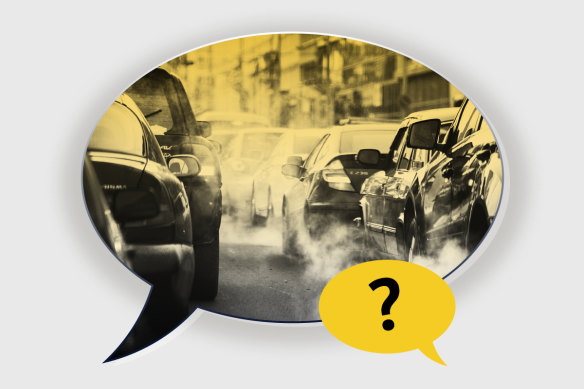Services and infrastructure have not kept up with population growth and the cracks are starting to show. Our readers have told us they want answers from Victoria’s politicians.
Victoria has changed in the two decades since Premier Daniel Andrews was first elected to parliament, but perhaps the most profound change is in its population growth. The state has swelled by 1.74 million since 2002 and today 6.6 million people call Victoria home.
Adding the equivalent of South Australia’s entire population over the past 20 years has underpinned a strong economy by creating demand for housing construction and services. But it has inflicted growing pains, too, as essential services and infrastructure haven’t been delivered at the same pace. How to deal with this pressure is a key question voters want answered before the state election.
Ahead of Victoria’s November poll, The Age is focusing on what you want to discuss, rather than where political parties and candidates try to lead us. As part of our Victoria’s Agenda project, we’ve spent months asking Victorians what they want the election to be about: Our journalists travelled the state talking to people, and 5439 readers responded online, and then our polling company asked another 551 in September.
A clear theme emerged that voters want politicians to talk about building transport and infrastructure that meets the needs of our growing population. Wijdan Osman told us this was at the front of her mind when we met in Melbourne’s outer north: “I would like more services for transport, especially in Craigieburn – more transport, more buses more trains.”
Jenny Gardner wrote to tell us she was concerned that in the rush to accommodate more people, our cities and regions were being “sold to developers” who gave little attention to creating “liveable, connected communities” – something that “impacts on us for generations”.
While Ahmed Hilowle, who we bumped into in Macleod, said he was worried politics distorted where money was spent, with places such as Broadmeadows and Heidelberg missing out. “Because these areas tend to vote for Labor, no one really pays attention to them,” Hilowle said.
Credit:
What are the population pressures in Victoria?
Motorists sit in traffic jams while new suburbs pop up without public transport, cutting off residents from work and education opportunities. Regional Victorians say their roads are full of potholes and their internet is unreliable. Healthcare, education and other essential services become even harder to deliver as Melbourne’s outer edge expands.
What voters told us about depended on where they lived.
Almost all of Victoria’s recent population growth has been in Melbourne, which has swelled by 20 per cent over the past decade to reach just under five million people. Access to jobs, leading universities and relatively affordable housing made it a destination of choice for people moving from interstate or overseas.
Would denser suburbs halt Melbourne’s outward expansion and make it easier to provide services and infrastructure to everyone?
Two years of COVID-19 lockdowns appears to have only temporarily slowed the city’s growth, which before the pandemic was projected to hit 9 million people by the middle of the century – the same size as London today.
Malcolm McCaskill told us he was worried families were being forced to rely on cars to get around Melbourne. “None of the new rail stations built in the last 50 years have led to the walkable mixed-use communities,” he said.
So, would denser suburbs halt Melbourne’s outward expansion and make it easier to provide services and infrastructure to everyone? Or would this mean overdevelopment and high-rise buildings in existing suburbs?
Meanwhile, a wave of tree-changers and sea-changers who have left Melbourne since the pandemic and the advent of flexible working is also stretching regional infrastructure and even threatening a housing shortage in some parts of the state.
Regional population growth might take pressure off Melbourne but people living outside the capital are concerned they’re not equipped to handle it. Ken Lethborg, a retiree in Gisborne, told us he was worried infrastructure wasn’t being maintained. “The road system is pretty poorly made – it breaks down, they fix it; it breaks down, they fix it. I don’t think it’s keeping up with the demand for the traffic,” he said.
The government has huge transport infrastructure pipeline. Isn’t that enough?
The Andrews government certainly isn’t afraid of building things. Transport “mega projects” are a hallmark of its time in power: the West Gate Tunnel, North East Link road project, Melbourne Airport Rail, the Metro Tunnel, Level Crossing Removal Project and the Regional Rail Revival are just some of the projects under way. They’re part of a $184-billion pipeline of infrastructure work that will stretch on for decades.
But battle lines are drawn over whether it’s the right infrastructure, what should be built first and whether we can afford to build it at all. The biggest fight now is over the government’s flagship Suburban Rail Loop. Matthew Guy’s opposition says we can’t afford to build the first $34.5 billion leg of the project, running between Cheltenham and Box Hill, and wants to redirect funds to repairing the health system.
The government says the Loop is an essential public transport project and will also reshape Melbourne’s growth by creating new population and employment hubs along the 90-kilometre line.
The first leg in the eastern suburbs would open by 2035. But the northern and western suburbs would have to wait for at least another 30 years for it to continue to Melbourne Airport and then down to Werribee, while residents are crying out for more public transport now.
It’s not all roads and trains, either. In Macedon, retail worker Anna Campbell said she wanted candidates to talk about other resources to regional Victoria.
“How can we be only 50 minutes from the city and not have secure internet?” she asked.
In Gisborne, Lethborg said: “We’re having a lot of power outages recently, so I would really think it needs to be addressed.”
Meanwhile, labour and skill shortages are hurting the regions and a housing crisis will make it even harder for farms and other businesses to find the workers they need.
And while Victoria’s dams are close to full in the middle of a wet La Nina season, just a few years ago Western Water was warning it might not be able to keep up with demand as it projected the number of homes it serviced to almost quadruple over the next 50 years.
How do we choose what to build? Do we have the right priorities?
Infrastructure Victoria, the government advisory body, has a long list of projects it says we need to keep the state moving, but which the government hasn’t acted on. That includes building a third tunnel under the city (Melbourne Metro 2) and upgrading the City Loop so trains can run more frequently across the whole train network. Melbourne’s booming outer-western suburbs are also still waiting for Metro trains services.
The split over the Suburban Rail Loop makes this the second election in less than a decade fought over the merits of a “mega project”, after Andrews swept to power in 2014 promising to axe the Coalition’s East West Link tollway.
So, we’ll ask the politicians from both sides: is this the best way to decide which projects Victoria builds? Is there a long-term plan to meet Victoria’s needs? And are politicians favouring headline-grabbing “mega projects” over upgrades that deliver greater benefits for less money?
We’ll also examine the cost of these projects. The government will spend $21 billion on building new infrastructure every year over the next four years, while credit ratings agency Moody’s projects the infrastructure spending spree will more than double Victoria’s debt levels to 2026 – a subject we’re examining separately.
These are crucial questions for Victoria’s voters, and we’re putting them on the politicians’ agenda.
If you'd like some expert background on an issue or a news event, drop us a line at [email protected] or [email protected]. Read more explainers here.
Most Viewed in National
Source: Read Full Article

